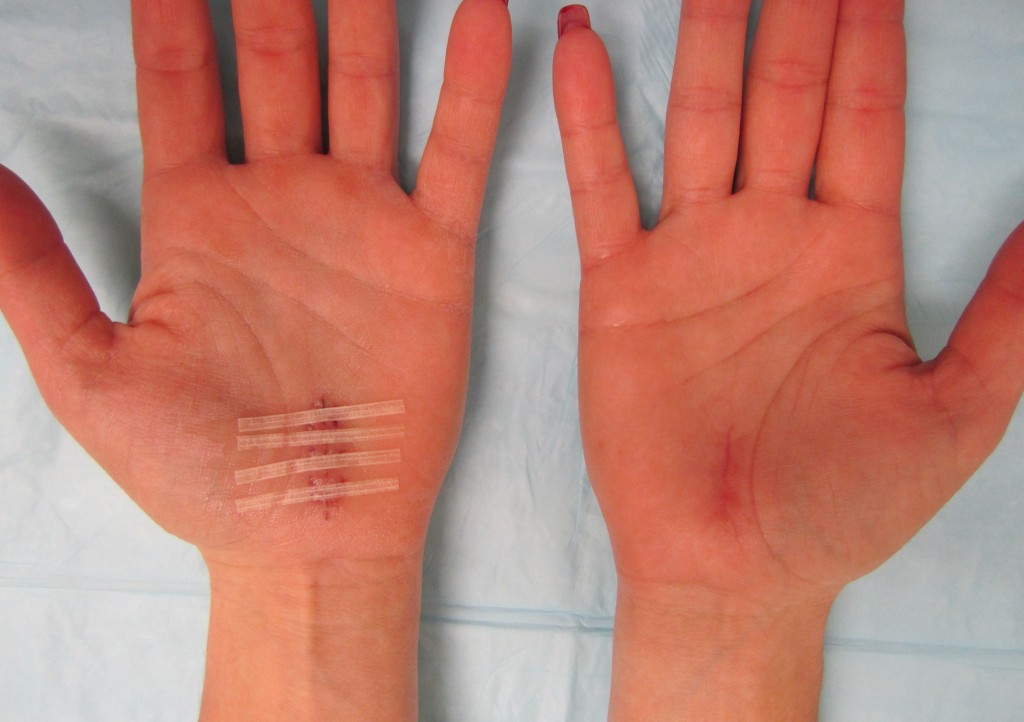When a patient is planning to undergo carpal tunnel release surgery, there are several types of surgeries available. These are traditional open release, mini-open release, and endoscopic release. Hand surgeons continue to debate the pros and cons of each technique. The various techniques have been compared in many studies. The long-term results and complication rates are similar between these procedures. Less-invasive techniques result in less pain in the short-term compared to the traditional open approach. The most important aspect of the procedure is taking pressure off the nerve while avoiding complications. Surgeons use the procedure which has worked well in their hands safely.
I have used the limited-open carpal tunnel release since 2010. This involves an incision in the palm measuring about an inch long, or 2 centimeters. The surgery can be performed with local anesthesia (numbing medicine) and oral Valium. Most patients treated with this technique do not need to be put to sleep or visit a hospital. At the end of surgery, soft bandages are placed to protect the incision. I ask patients to change the bandage in 3-5 days. At that time patients can wash the wound with clean water and soap. Then, a small bandage is used to cover the site until it is healed, in about 2 weeks. The suture is removed at 10-14 days after surgery.

This is a picture of a patient who underwent carpal tunnel release by me 6 weeks ago in the right hand and 2 weeks ago in the left hand.
I advise patients to use their hand lightly 2-3 weeks after surgery and “let pain be your guide.” After that, patients can gradually increase their hand activities. Most patients are pleased with the improvement in the hand numbness and painful tingling symptoms after surgery. Surgical-site pain and scar tenderness in the palm gradually decrease over a few weeks. Most patients regain function and range of motion on their own without hand therapy.
Carpal Tunnel Syndrome is a very common hand condition. Make a consultation with a hand specialist to advise you on your treatment options.
